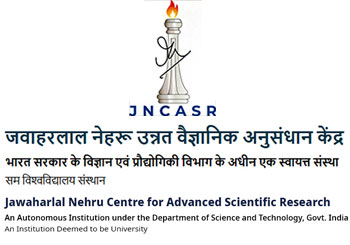Fire Safety Policy
Fire Safety Policy
JNCASR is committed to the Health and Safety of all our staff and students. The purpose of the Health and Safety policies and procedures is to guide and direct all to work safely and prevent injury to themselves and others. We are encouraged to participate in developing, implementing, and enforcing Health and Safety policies and procedures. We must take all reasonable steps to prevent accidents and never sacrifice safety for expedience. Our goal is to eliminate or minimize hazards that can cause accidents. It is institution policy that all students and staff be given safety training and the policy manual and be familiar with its contents. This policy will be reviewed annually. Together we can achieve a safe and happy work environment.
Keywords
'Health' can be defined as a state of well-being in both a physiological and psychological sense. A healthy condition is where a person is physically and mentally fit.
'Safety can be defined as the absence of danger or physical harm to persons.
'Welfare' relates to the provision of workplace facilities that maintain the fundamental well-being and comfort of the worker, such as eating, washing, and toilet facilities which enable them to fulfill their bodily functions.
'Environmental protection' may be defined as a measure used to prevent harm to the world's environment. It prevents damage to air, water, land, and natural resources protecting flora, fauna, and human beings and their inter-relationships
One of your most important responsibilities is to protect the Health and Safety and that of our co-workers and students. This will discuss some of the duties under the Occupational Health and Safety legislation and help you make your workplace safer and healthier.
Safety Committee.
The safety committee is responsible for coordinating the overall safety program designed to protect people, property, the environment, comply with governmental regulations, and protect against liability.
Roles and responsibilites
- Conduct exposure monitoring, as needed.
- Provide general training.
- Audit the departmental program periodically.
- Provide safe working guidelines for laboratory workers as well to the general people.
- Review the model EHS policies at least annually.
- Inspect fume hoods annually.
- Provide consultation for safe work practices for hazardous chemicals.
- Conduct limited laboratory safety inspections annually.
- Develop and maintain the EHS Website.
Safety Meetings.
The committee members will conduct the safety meeting in the presence of the administrative officer. Safety meetings are an opportunity to review specific accidents and cover the overall safety performance of the group. Discussion time must also be allotted to members to discuss the same and is minute.
Safety Officer.
Safety Officer is a designated staff of sufficient authority appointed by the Safety Department Chair to oversee safety in a Department/Centre Every Department/Centre. They will be appointed by the Department Chair and informed to the committee. The Safety officer shall be the primary point of contact at a Department/Centre for Safety Committee and responsible for identifying and reporting any unrecognized hazards in the department to the committee.
Roles and responsibilities:
- Implement the HSE policy & procedures at the site.
- On-site pumproom inspection and addressable fire alarm panels on campus.
- Weekly Lab safety meetings.
- Yearly safety training to the students and staff of the campus.
- To conduct fire prevention equipment inspection weekly.
- Coordinate at least two evacuation exercises/fire drills per year to ensure that all staff becomes familiar with these procedures.
- Maintaining the cylinder management on campus and carries the data with the help of a QR barcoding system.
- Coordinate HSE activities with vendors who are all working under our premises.
- Monitoring and coordinating the fire hydrant training to the security staff.
- Prepare Risk assessment and Accident /Incident Investigation reports.
- Prepare and submit weekly and monthly reports to the safety committee of the campus.
- coordination with the project management team and client operations& HSE
- Carry out safety inspections, investigations and conduct safety meetings, induction, and training to create safety awareness and ensure safe working. environment
- Ensure that monthly inspection of fire extinguishers, power tools, equipment and machinery, ladders, lifting gears are carried out.
- Prepare the site report regarding HSE issues, incidents, and FAC (First Aid Case).
- To conduct the weekly site audit.
Lab safety in charge
- Each lab shall have a designated Lab safety in charge, an Employee from the cadre of faculty/PI or scientific staff with sufficient authority.
- Act as a liaison between the department and EHS for laboratory safety issues.
- Maintain records of training, exposure monitoring and medical examinations.
- Ensure laboratory workers receive chemical and procedure-specific training.
Lab safety:
The Individual labs shall be personally responsible for their safety. Moreover, follow the Safety Rules prescribed by the Safety Committee of the campus. They must undergo training in laboratory protocols and emergency responses, understand potential hazards in their respective laboratories, and act to minimize the risk associated with those hazards.
All the students are expected to be trained and tested in these practices and procedures before starting work in the laboratory to which they are assigned and must undergo retraining and testing at regular intervals.
Students:
- Attend laboratory safety training.
- Review the Chemical Hygiene Plan
- Follow procedures and laboratory practices outlined in the Lab safety policy and EHS Website and as provided by supervisors and principal investigators.
- Use engineering controls and personal protective equipment, as appropriate.
- Report all incidents, accidents, potential chemical exposures and near miss situations to the principal investigator and the Chemical Hygiene Officer.
- Document specific operating procedures for work with particularly hazardous substances, including carcinogens, reproductive toxins and chemicals with high acute toxicity.
Principal Investigators
- Ensure lab students attend laboratory safety training given by safety committee.
- Ensure lab students understand how to work with chemicals safely. Provide chemical and procedure-specific training, as needed.
- Provide lab students with appropriate engineering controls and personal protective equipment needed to work safely with hazardous materials. Ensure such equipment is used correctly.
EHS Training.
Explain the importance of safety education and training to ensure a safe and healthful workplace. Emphasize that students must not perform tasks, jobs, assignments, etc., for which they have not been trained and authorized to act safely. Describe how routine safety meetings will be held with all labs to keep them adequately informed about performing their assigned work safely. Also, encourage the new students and staff to report on the effectiveness of their safety orientation and safety meetings so that improvements can be made. Every year, we are conducting basic safety training, including the first aid safety with demonstration. (Photos need to be attached)
Fire and Emergency.
We have made a dedicated team for the Fire & Emergency responses, including FIRE WARDEN for the accident investigations, and are essential to gathering pertinent information. We will review the typical accidents occurring within the committee and how they can be avoided.
IN CASE OF FIRE
- If you discover a fire, shout „FIRE! FIRE! FIRE! „ & activate the nearest fire alarm call point by breaking the glass. Immediately notify occupants of that part of the building to evacuate the building.
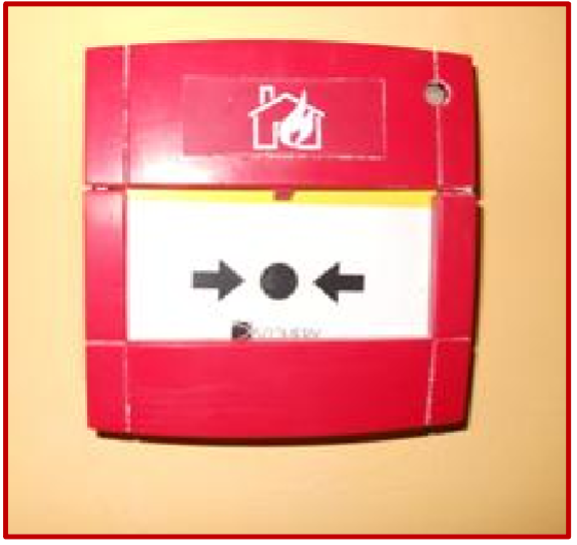
- Inform the Emergency response security team , Lab /unit Faculty in- charge & Coordinator safety.
- If the fire has not spread from its point of origin, attempt to extinguish the fire by using the correct fire extinguisher – (Only if you have been trained in its safe use. Do not put yourself at risk).
Operation of Fire extinguisher
- Pull the pin – This will allow you to squeeze the handle in order to discharge the extinguisher.
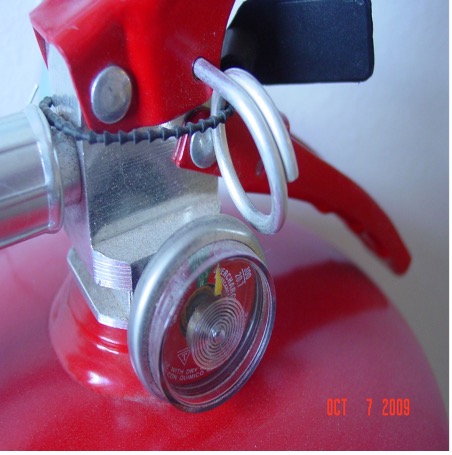
- Aim at the base of the fire, aiming at the middle will do not good. The agent will pass through
the flames.

- Squeeze the handle – This will release the pressurized extinguishing agent.
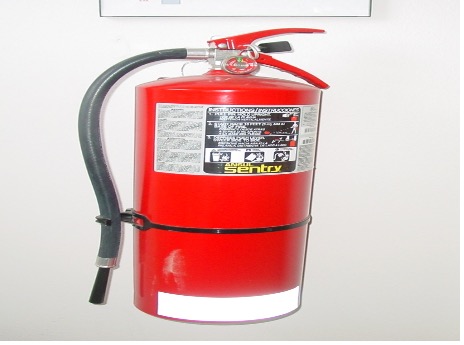
- weep side to side – Cover the entire area that is on fire. Continue until fire is extinguished.
Keep an eye on
the area for re-lighting.
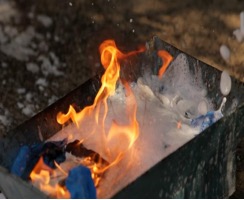
- The Emergency team, on hearing the alarm will ask the occupant of the building to the nearest assembly point (Eg: Open Foyer or ground Infront of the building).
- The duty security guard for each area will carry out a trawl of their floor, checking rooms, areas to ensure all rooms have been evacuated, closing all doors behind them on their way out to safety.
- No personnel to re-enter the building for any reason until instructed by the Security Officer/Safety In charge that it is safe to do so.
In case of an Emergency, please contact.
Security Office : +91-8022082789/2800 Mob:+91-9449155205
Fire control room: 101
Fire Force Dept: +91-80-22133070
Amrithahalli Police: +91-80-22943644
Co-Ordinator, Safety: +91-80-22082710/+91-9846215008
Housekeeping
A good safety program cannot be achieved and maintained without good housekeeping and orderliness. We maintain good housekeeping and orderliness by keeping all necessary things in their assigned places and removing all unnecessary things from the workplace. For that, we have assigned a dedicated housekeeping supervisor to monitor and supervise the work until the worksite has been cleaned up and returned to its normal orderly state. In cleaning the entire lab in a single day, like scrubbing a door, etc., the housekeeping staff will care.
Gas Cylinder Policy.
- We do not permit smoking or open flames in areas where flammable gases are stored or handled.
- Safety shoes are recommended for people involved in the handling of cylinders.
- Read the label to see what gas you are dealing with, and double-check that the cylinder/gas is suitable for the intended use.
- If the labeling on a cylinder becomes unclear or the tag is defaced so that contents cannot be identified, mark it as "contents unknown" and return it to the manufacturer.
- If there is a mismatch between the cylinder color and the label, do not use it. Contact the supplier immediately.
- Maintenance of cylinders, valves, or relief devices must be done only by trained personnel.
- An emergency response plan must be developed and implemented wherever compressed gas cylinders are used, handled, or stored.
- Valve protection caps must remain in place at all times, except when cylinders are secured and connected to dispensing equipment.
- Use only the wrenches or tools provided by the cylinder supplier to open or close a valve.
- Distribution lines and their outlets must be clearly labeled with the type of gas contained.
- Piping systems should be regularly inspected for leaks.
- Cylinders should be secured and properly restrained using straps or chains connected to a wall bracket or fixed surface.
- Store all cylinders upright and secure them on a level surface to prevent falling.
Waste disposal Policy.
- Select an appropriate container (glass/polyethylene) for storage. The container should be compatible with the chemical being stored.
- Use the original containers if possible.
- Use appropriately sized containers (large enough).
- Use a separate container for each type of waste.
- Do not make containers too heavy to lift.
- Containers must be tightly sealed and should not leak.
- Stick a Waste log sheet with the waste information (applicable to liquid wastes of all kinds, including organics). See the Appendix section for the Waste log sheet. It is vital to maintain a list of all the materials in a waste container.
- Write the chemical names in an expanded form, not as abbreviations or chemical formulas (i.e., "Ether" instead of "Et2O" and "Dimethylphosphinoethane" instead of "DMPE").
- Do not store waste in a fume hood where other reactions are in progress.
- Do not use metal cans for aqueous waste storage. Even at near-neutral pH, solids and liquids can corrode through metal cans. Use only glass or polyethylene containers for waste storage.
- Do not store containers with flammable waste on a bench or the floor.
- Store flammable waste containers in flame-proof cabinets.
- Waste segregation: Proper segregation of laboratory waste is mandatory for a safe workplace.
- Ensure that chemicals or wastes that are stored together are compatible with each other.
- Aqueous solutions consist mainly of mineral acids/bases. Although these wastes are not highly toxic, they must be neutralized and labeled correctly.
- Acid waste includes acids such as sulfuric, hydrochloric, hydrobromic, hydroiodic, and nitric acids. (Caution: Do not mix nitric acid with organic acids. Nitric acid and organic acids should not be stored in the same cabinet.)
- Basic waste includes bases such as sodium and potassium hydroxide.
- Back to previous page
- |
-
Page last updated date:15-04-2025 05:20 PM







